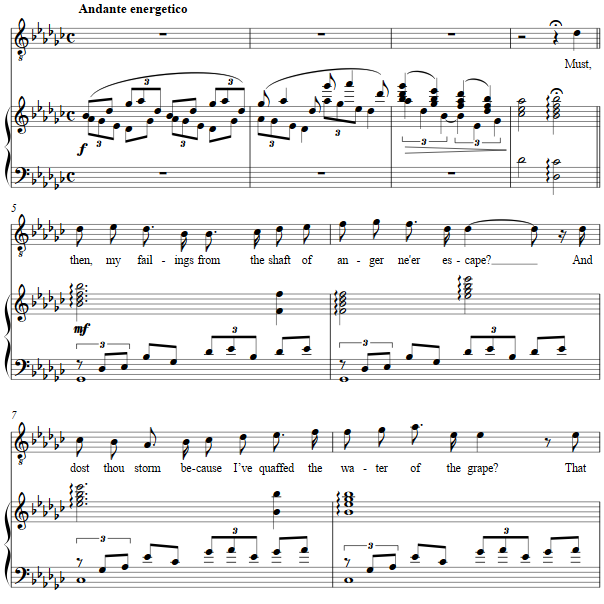Music and Texts of GARY BACHLUND
Vocal Music | Piano | Organ | Chamber Music | Orchestral | Articles and Commentary | Poems and Stories | Miscellany | FAQs
Answer to a Reproach for Drunkenness - (2018)
attributed to Caliph Yazid I
for tenor and piano
Must, then, my failings from the shaft
Of anger ne'er escape?
And dost thou storm because I’ve quaffed
The water of the grape?
That I can thus from wine be driv’n,
Thou surely ne'er canst think—
Another reason thou hast giv’n
Why I resolve to drink.
'Twas sweet the flowing cup to seize,
'Tis sweet thy rage to see;
And first I drink myself to please,
And next, to anger thee.3 pages, circa 1' 45"
The coin above comes from the reign of Yazid I (c. 642-683), stamped probably between 676 and 677, giving a likeness of the caliph from the poet attributed to this text.
From an undated Wikipedia article on "Yazid I," one reads: "Some scholars regard Yazid as a just, noble, religious and administratively efficient ruler and that his nomination by his father Muawiya as caliph was proper. Notable contemporaries such as Ibn Abbas and Muhammad bin Hanfia regard Muawiya's nomination of Yazid as sincere and proper as Muawiya genuinely believed that Yazid had the qualifications of being the leader of Muslims.Muslim tradition regards Caliph Yazid I as a tyrant who was responsible for three major actions during the Second Fitna that were considered atrocities: the death of Husayn ibn Ali and his followers at the Battle of Karbala, considered a massacre; the aftermath of the Battle of al-Harrah, in which the troops of Yazid's general, Muslim bin Uqbah al-Marri, pillaged the town of Medina; and the burning of the Kaaba during the siege of Mecca, which was blamed on Yazid'scommander Husayn ibn Numayr.That view was summed up with the following evaluation of Yazid by a scholar from the Abbasid era: He was strong, brave, deliberative, full of resolve, acumen, and eloquence. He composed good poetry. He was also a stern, harsh, and coarse Nasibi. He drank and was a reprobate. He inaugurated his Dawla with the killing of the martyr al Husayn and closed it with the catastrophe of al-Harrah. Hence the people despised him, he was not blessed in his life, and many took up arms against him after al-Husayn...."
Historians take various sides and perspectives as regards this caliph of the Umayyad dynasty, but what is certain is that this "poet" remains a central figure in the centuries' long schism between Sunni and Shia Muslims, and that drunkenness seems to be part of that story, as does it play a part in Heine' rhymed tale of Belsazar
. One may find advice from a variety of sources, and one such reflects the view that It's drink that uplifts
.
The rhymed English text attributed to Caliph Yazid I is found in The World’s Wit and Humor: An Encyclopedia in 15 Volumes, 1906. The text is interesting for a common human truth it reveals -- the phenomenon of the "forbidden fruit." Throughout literature and stories across centuries, that which is "forbidden" is in part a lure to some for the fact that others have deemed something or some action forbidden. This has been excuse enough for violating such a social taboo, with modern psychology telling this also as a truth of the human condition.
The setting in D minor quotes a gesture from Schubert's setting of Goethe's Gretchen am Spinnrade," D 118, and other gestures, arpeggios and parallelisms accompany the narrative, as narrator, mice and cat all take their lines in turn.
The score is available as a free PDF download, though any major commercial performance or recording of the work is prohibited without prior arrangement with the composer. Click on the graphic below for this art song score.
Answer to a Reproach for Drunkenness

